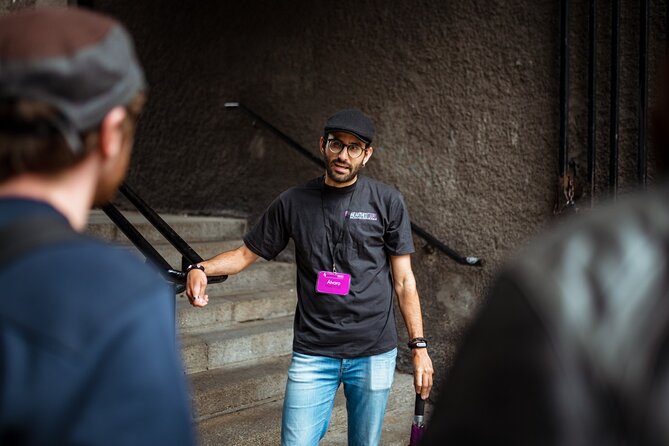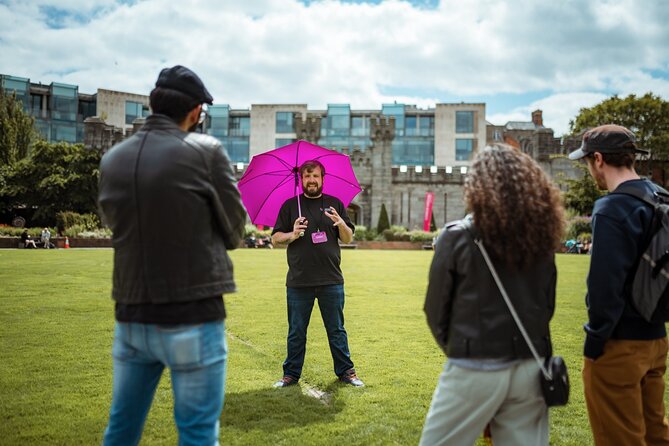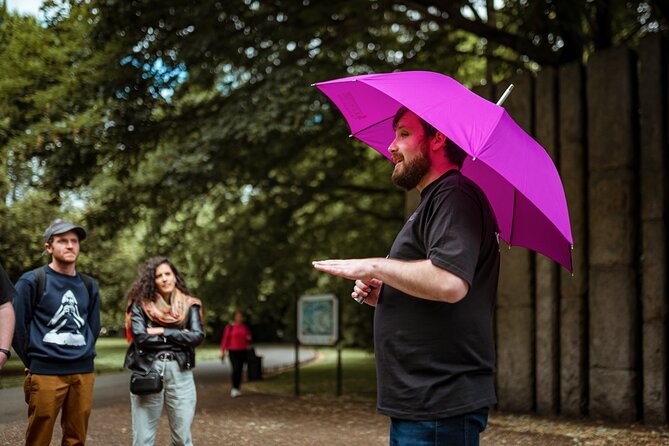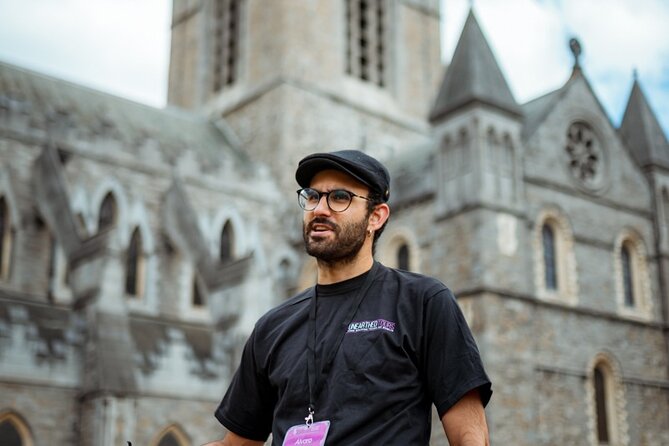Physical Address
304 North Cardinal St.
Dorchester Center, MA 02124
Physical Address
304 North Cardinal St.
Dorchester Center, MA 02124

Dublin’s dark history has long captivated the imagination of visitors and locals alike. Beneath the city’s charming facade lies a legacy of gruesome acts, from the notorious Colthurst family killings to the chilling exploits of the "Werewolf of Copenhagen." Explore the haunting sites that bear witness to Dublin’s macabre past, where the echoes of violence still linger, waiting to be uncovered.
You can also read our reviews of more tours and experiences nearby.

Though Dublin is often celebrated for its rich cultural heritage and lively pub scene, the city’s dark history is equally captivating.
From tales of gruesome murders and grisly executions to the shadowy underworld of brothels and witchcraft, Dublin’s past is shrouded in mystery and macabre.
Visitors can explore the haunting remnants of this dark legacy, from the imposing Dublin Castle to the eerie catacombs of St. Michan’s Church.
As the guides on this tour reveal, the city’s streets hold a wealth of untold stories, each more chilling than the last.
Dublin’s past isn’t for the faint of heart.

Dublin’s dark history is rife with notorious cases of murder and torture. Among the most infamous are:

As visitors explore Dublin’s historical landmarks, they uncover a tapestry of grim legends that have haunted the city for centuries.
Stories of the Hellfire Club, a notorious secret society, whisper of dark rituals and occult practices. The haunting apparition of a headless horseman is said to roam the streets, a remnant of a gruesome beheading.
Rumors of cannibalism and grave robbing further fuel the city’s reputation for sinister deeds. These chilling tales captivate travelers, who eagerly seek out the sites where such events supposedly took place, eager to uncover Dublin’s darkest secrets.
What makes these historically-significant sites so captivating are their haunting pasts.
The tour explores dark corners of Dublin, uncovering chilling tales of:
These sites offer a glimpse into Dublin’s grim history, stirring the imagination with their shadowy secrets.
The knowledgeable guide brings these haunting stories to life, leaving a lasting impression on visitors brave enough to face the city’s darker side.
Though Dublin’s history is rife with tales of murder and intrigue, one of the more chilling aspects of the city’s past is its connection to the macabre world of witchcraft.
Throughout the centuries, Dublin has been the site of numerous witch trials and executions. Infamous cases, like that of Alice Kyteler in the 14th century, highlight the city’s dark history of religious persecution and the often cruel treatment of those accused of practicing sorcery.
Remnants of these dark times can still be found, such as the St. Michan’s Church crypt, rumored to hold the remains of alleged witches.
Beneath Dublin’s rich cultural heritage and iconic landmarks lies a seedy underbelly that has long captured the imagination of those intrigued by the city’s dark past.
This walking tour explores the darker side of Dublin, delving into its history of:
Guides share unique stories not found in regular guidebooks, bringing to life the city’s macabre past and enhancing the spooky atmosphere.
Suitable for adults seeking an immersive and entertaining glimpse into Dublin’s seedy underbelly.
How did grave robbing become an infamous part of Dublin’s dark history?
In the 18th and 19th centuries, the demand for cadavers for medical research and education led to a rise in grave robbing. Unscrupulous "body snatchers" would dig up freshly buried corpses and sell them to physicians.
Dublin was no exception, with the city’s graveyards and burial sites targeted by these grave robbers. The practice was so widespread that churches had to employ "resurrection men" to guard graves and deter the thieves.
This lucrative yet illicit trade continued until the Anatomy Act of 1832 provided a legal supply of bodies.

As participants embark on the "Dark Dublin: Torture, Murder & Mystery" walking tour, they’re immersed in the spooky atmosphere that pervades the city’s historic streets.
The guides expertly set the tone, regaling visitors with chilling tales of Dublin’s dark past. The tour’s stops, which include sites with notorious histories, further enhance the eerie ambiance.
Visitors may feel the hair on the back of their necks stand up as they explore:
We've Also reviewed these nearby tours and experiences
The tour may not be suitable for children, as some reviews suggest it may be too dark and disturbing for younger audiences. The focus on themes like murder, torture, and witchcraft could be inappropriate for children.
The tour offers free cancellation up to 24 hours before the experience starts, allowing travelers flexibility with their plans. This policy provides convenience and peace of mind when booking the tour.
The tour is wheelchair and stroller accessible, and service animals are allowed. This provides options for travelers with mobility needs or disabilities to participate in the walking tour of Dublin’s dark history.
Travelers are generally permitted to take photos during the tour, though they’re advised to be respectful and avoid disrupting the guide’s narration. However, some sites may have restrictions, so participants should check with the guide beforehand.
The tour is conducted in English. According to the tour overview, the language of the 2-hour Dark Dublin walking tour is not specified, but given the location in Dublin, Ireland, it’s reasonable to assume the tour is offered in the local language, English.
Dublin’s dark history is a haunting tale of violence, intrigue, and the macabre. From the chilling Colthurst killings to the sinister exploits of the "Werewolf of Copenhagen," the city’s past is steeped in a legacy of torture, murder, and mystery. Visitors can explore the grim narratives of historical sites, uncover the secrets of grave robbing, and enjoy Dublin’s spooky atmosphere, uncovering the unsettling layers of its unsavory history.